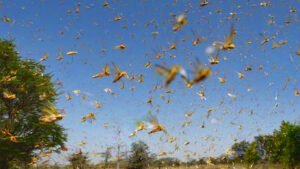 Over the next few weeks, the Charlotte region will witness a truly extraordinary natural event as millions of cicadas prepare to fill the air with their distinctive calls.
Over the next few weeks, the Charlotte region will witness a truly extraordinary natural event as millions of cicadas prepare to fill the air with their distinctive calls.
For the first time in over 200 years, 2 of America’s largest broods, Brood XIX and XIII cicadas, are poised to emerge simultaneously. Experts estimate that this synchronized emergence will result in a staggering population exceeding 1 trillion cicadas.
Cicadas, known for their periodic appearances at 13 or 17-year intervals, typically emerge in different geographical regions, with various broods making appearances every five to six years. However, the convergence of Brood XIX and XIII, two of the largest brood types, is an exceptional occurrence this year.
Brood XIX, also called The Great Southern Brood, emerges every 13 years and covers a vast area across the southeastern United States, extending northward to Illinois. In a unique twist, this brood intersects with the 17-year cycle of Brood XIII, resulting in their simultaneous emergence.
This rare event, last observed during Thomas Jefferson’s presidency in 1803, marks a historic moment, with these broods emerging in the same year after 221 years.
While both broods are returning in 2024, they are not emerging in the same locations or at precisely the same times. The timing of their emergence is influenced by soil temperatures, warming gradually from south to north.
As soil temperatures reach 64°F at a depth of 8 inches, the cicadas will begin to emerge. Prime locations around Charlotte to witness and hear their chorus include Fort Mill, Tega Cay, Pineville, Ballantyne, and Harrisburg.

Although the mating calls of cicadas will be extremely loud and persistent, the insects themselves are harmless to humans – they don’t sting, bite, or carry toxins. The Environmental Protection Agency (EPA), however, does note that they can pose a serious risk to young trees if female cicadas lay eggs in them.
To safeguard trees, the EPA advises using ultra-fine insect mesh for young trees around your property.


